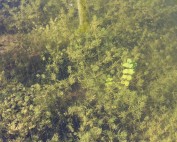Which species to collect?
We select which species to include in our seed mixes by:
- Assessing the site through:
- a soil test for phosphate, potassium, pH and texture
- digging a soil pit
- considering aspect and topography
- referring to other factors given in the book ‘Habitat creation and Repair’ by Oliver Gilbert and Penny Anderson (Oxford University Press, 1998)
- Compiling a list of what grassland plants occur or have occurred within a given radius of a site (we’ve used 3, 5 or 8km) by:
- looking at existing similar habitats on or near the farm such as road or railway verges, churchyards, old mineral workings or nature reserves
- referring to plant atlases, in our case ‘A Flora of Norfolk’ (Beckett & Bull, 1999, published by Gillian Beckett)
- getting records from databases such as the county biological records centre or the Botanical Society of Britain & Ireland (these often have to be paid for)
- Refining the list produced from atlases and databases by:
- looking at the National Vegetation Classification species list for the grassland type we are aiming for. For Norfolk, the www.norfolkbiodiversity.org website gives a local version of these classifications
- removing very common species that will be in the seed bank or species that, if they became common, may undermine creating the target habitat. For example, for chalk grassland we do not add Cock’s-foot or Cow Parsley
- excluding non-native species
- considering whether we should have different lists for different parts of a site if, for example, there are two distinct soil types
- Consulting experienced botanists
- we run our provisional lists produced from the above past local botanists and county plant recorders. They can advise on what species are appropriate to a particular locality. This is a very important step which I strongly recommend



